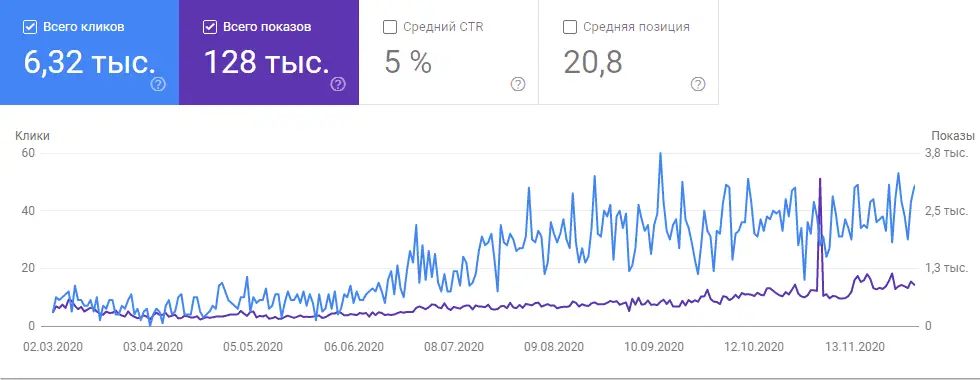SEO Optimization for a Travel Blog
Website: visitgeorgia.me
Region: CIS countries
Before: CTR – 1.4, daily visits – 3
After: CTR – 4.8, daily visits – over 45
SEO Optimization for a Travel Blog
What Was Done:
- Website audit for code errors
- Website speed check
- Verification of all site links
- Meta tags analysis
- User behavior and site usability analysis
- Development of a concrete site optimization plan
Website Optimization
- Page load speed optimization
- Optimization of site and page structure
- Detection and correction of website errors
- Fixing broken links
- Optimization of Meta tags and Alt attributes
- Adding necessary functionality based on analysis results and identified inefficiencies
- Improving site usability
Content Optimization
- Headline optimization
- Text optimization
- Image optimization
- Writing additional content for the website
- Writing thematic articles
Steps for SEO Optimization of a Travel Blog
Creating and maintaining a travel blog is a great way to share knowledge and experience while attracting the target audience. However, to achieve high search engine rankings and stand out among competitors, thorough SEO optimization is necessary. Here, we outline key steps and strategies for successful SEO optimization of a travel and tourism blog.
Keyword Analysis
Keyword research and selection is the first and most important step in SEO optimization. Keywords help search engines understand your content and drive traffic to your site. Main steps include:
Keyword Research
Start by researching keywords to identify the most relevant and popular terms that will attract your target audience. Useful tools include:
- Google Keyword Planner: Provides search volume and competition data for keywords.
- SEMrush: Platform for keyword analysis and competitor research.
- Ahrefs: Tool for finding keywords and analyzing competitiveness.
- Ubersuggest: Free tool for keyword ideas and content planning.
Keyword Selection
After research, select keywords that best reflect your blog content and audience interests. Consider:
- Search volume: Determine popularity of keywords to choose the most searched terms.
- Competition: Assess competition for keywords. High-competition terms may be harder to rank for, especially for new blogs.
- Relevance: Ensure keywords match your articles’ content and audience interests.
Content Optimization
Content is the heart of any blog. Optimizing content for search engines includes:
Creating Quality Content
Content should be unique, informative, and useful. Key principles include:
- Originality: Publish unique content not duplicated elsewhere.
- Informative: Provide useful information that answers questions and solves problems.
- Readability: Use clear language, divide text into paragraphs, and use lists for easier reading.
- Relevance: Update content and add new materials to maintain audience interest.
Keyword Usage
Incorporate keywords in important content elements to improve visibility:
- Headings and subheadings: Include keywords in H1, H2, and H3 tags.
- Meta tags: Create unique meta titles and descriptions with keywords.
- Alt attributes for images: Add keyword-rich descriptions to images.
- Anchor text: Use keywords in internal and external link text.
Content Length Optimization
Longer content often ranks better. Aim for 1500–2000 word articles to cover topics in depth and improve SEO.
Technical SEO Optimization
Technical SEO improves site performance and visibility. Key areas include:
Page Load Speed
Fast loading pages improve user experience and SEO. Recommendations:
- Image compression: Reduce image sizes without losing quality.
- Code optimization: Minify CSS and JavaScript files.
- Caching: Configure browser and server caching for faster repeat visits.
- Use CDN: Deliver content via servers closest to users.
Mobile Optimization
Mobile optimization ensures a good experience on all devices:
- Responsive design: Ensure the site displays correctly on any device.
- Interface optimization: Make buttons and forms easy to use on mobile devices.
- Mobile speed check: Test load speed on mobile and optimize if needed.
Fixing Technical Errors
Technical errors negatively affect SEO. Steps include:
- 404 errors: Set up redirects and custom 404 pages.
- Broken links: Regularly check and update internal and external links.
- Code audit: Conduct regular audits and fix detected errors.
Sitemap Creation and Update
A sitemap helps search engines index content:
- Up-to-date: Regularly update sitemap with new pages and remove outdated ones.
- Proper setup: Ensure sitemap is correctly configured and accessible to search engines.
- Include important pages: Verify all key pages and categories are included.
Link Optimization
Links are important for SEO as they indicate page significance.
Internal Links
Internal links improve site structure and navigation:
- Logical structure: Maintain a coherent internal link structure.
- Anchor texts: Use relevant keywords in anchor texts.
- Update old content: Ensure internal links remain accurate and relevant.
External Links
External links (backlinks) also impact SEO:
- Quality content: Publish valuable content that attracts backlinks.
- Guest posts: Contribute articles to authoritative blogs and websites.
- Partnerships: Collaborate with other sites for link exchange.
Monitoring and Performance Analysis
Regular monitoring is essential for SEO success.
Analytics Tools
Track traffic and user behavior using:
- Google Analytics: Monitor traffic, sources, and user behavior.
- Google Search Console: Track visibility, indexing, and fix errors.
- Ahrefs or SEMrush: Monitor keyword rankings and backlinks.
Competitor Analysis
Study competitor strategies to identify strengths and weaknesses:
- Keyword research: Analyze competitor keywords.
- Content analysis: Review competitor content and performance.
- Backlink evaluation: Analyze external links and link-building strategies.
Conclusion
SEO optimization of a travel blog requires a comprehensive approach: keyword analysis, content creation and optimization, technical SEO, internal and external link management, and regular performance monitoring. Effective SEO strategies help your blog achieve higher search engine rankings, attract your target audience, and stand out among competitors. Attention to detail and adapting to changing SEO conditions ensures long-term success and growth for your travel blog.




 https://web-seo-ppc.com
https://web-seo-ppc.com web-seo-ppc.com
web-seo-ppc.com
 web-seo-ppc.com
web-seo-ppc.com web-seo-ppc.com
web-seo-ppc.com web-seo-ppc.com
web-seo-ppc.com /web-seo-ppc.com
/web-seo-ppc.com web-seo-ppc.com
web-seo-ppc.com

